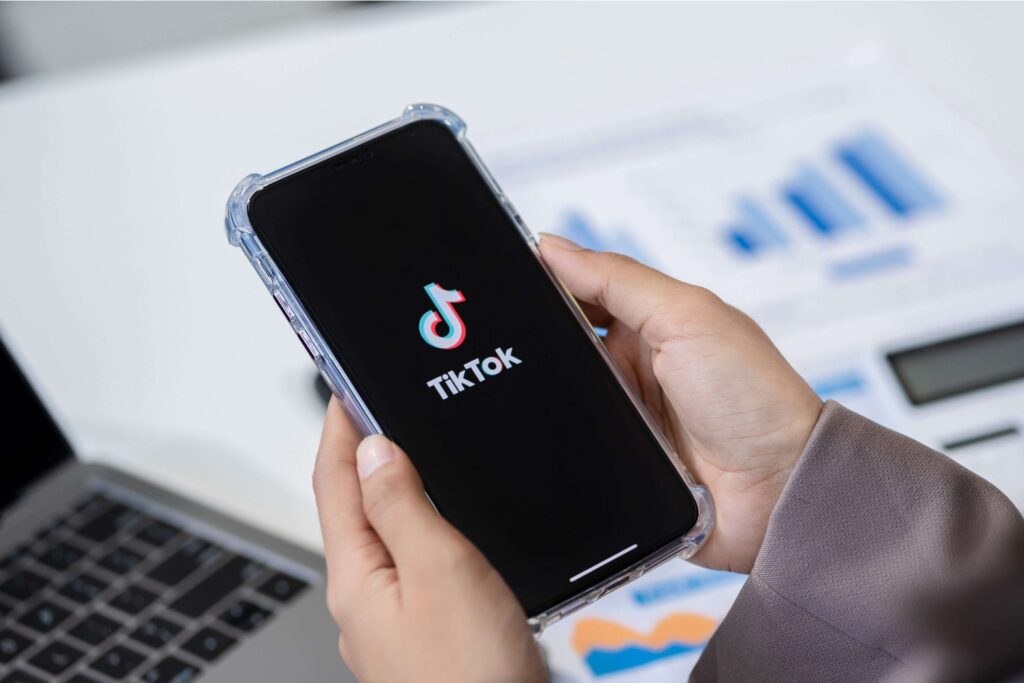Sell custom products without inventory
Zero. Okay, maybe that’s a little exaggerated. Stick with us – we’ll show you a cost-effective business model with no inventory, no upfront costs, and no logistical headaches.
But first, let’s look at entrepreneurship as a whole. How much money do you need to start a business? The answer depends on different factors, such as business types and expenses.
In this article, we’ll help you understand them all.
So, how much money do you need to start a business?

Let’s get real – how much does it cost to start a business online or offline? It depends on what you’re building. Are you freelancing from your bedroom or opening a bakery downtown? Your average startup costs could range from just a few hundred bucks to enough to make your credit card sweat.
Here’s a breakdown:
- Low-cost businesses – Think freelancing, Print on Demand (POD), or dropshipping. The average startup costs vary from $100 to $1,000. No inventory. No staff. Just a laptop and some hustle.
- Online businesses – Launching an online store, offering digital services, or selling on marketplaces? Expect the average costs of $500 to $5,000 on business registration, a basic website, tools, and initial marketing costs.
- Brick-and-mortar businesses – Opening a retail shop, café, or salon? Your average cost to start a business can jump up to $10,000 to over $50,000, depending on location, permits, office space, and equipment.
Key startup expenses to plan for:
- Business registration and legal fees
- Accounting software and tools
- Marketing strategy and promotion
- If you need to purchase inventory
- Fixed costs like rent or insurance
- Variable costs like materials or utilities
Most small business owners start with a budget, but reality adds up quickly. That’s why it’s essential to track both one-time and ongoing costs.
Want to avoid spending big before you’ve even made your first sale? Stick with a lean model like Print on Demand. You’ll save money, skip inventory headaches, and still build asuccessful business with global reach.
Make it happen today!
What expenses to consider when starting a business?

Here’s the truth: the cost of opening a business isn’t just one number. Startup costs are a mix of predictable expenses, sneaky surprises, and the occasional budget bomb if you’re not careful.
To build a solid business plan and make smart financial decisions, break your startup costs into categories. Here’s what most small business owners face:
Administrative costs
Register your business idea, get the right licenses, and pay for business insurance if needed. These are non-negotiables – skip them and you risk legal trouble. Think permits, legal fees, and business bank account setup.
Product or service costs
What is your small business selling? Handmade jewelry, digital designs, or consulting services? You’ll need materials, tools, or platforms to deliver your offer. For a print-on-demand business, product costs kick in only after the sale – your customer pays, you keep the profit, and there’s no upfront investment.
Operating costs
These are your daily and recurring expenses – the typical costs that keep your business alive. Rent (if you have an office), utility bills, accounting software, and customer service tools all fall here. Some are fixed expenses (the same every month), others are variable costs (they scale with your sales).
Shipping and fulfillment
If you’re selling physical products, you’ll either ship items yourself or use a fulfillment partner. Shipping is a major variable expense that too many new business owners underestimate. With Printify, fulfillment is handled for you – you only pay after the customer buys.
Staff and support costs

Hiring help? Factor in payroll, benefits, training, and business expenses. For solopreneurs or service-based businesses, these costs can be minimal. With Print on Demand, you can skip them entirely – no need to hire staff or manage customer support.
Marketing costs
Don’t just build it and hope people show up. You’ll need a marketing strategy to attract customers: ads, social media, email campaigns, and good ol’ market research. Most small business owners spend at least 1% of their projected company’s revenue on marketing and increase it as they grow.
Bottom line: Knowing your full list of costs helps you create a realistic budget, fine-tune financial planning, and build a business that lasts.
Make it happen today!
How to calculate your estimated costs?

Before launching anything, you need to know exactly what you’re up against. That means looking at real numbers. Solid startup’s financial planning helps you avoid running out of steam (and cash) just a few months in. So, how much will it actually take?
The answer starts with categorizing all the expenses involved in starting a business – from one-time costs to monthly expenses that show up like clockwork.
Here’s your breakdown.
One-time costs
These are upfront expenses you pay once at launch. They form the backbone of your initial investment and are crucial to getting your business moving:
Business registration and legal structure setup
Filing fees vary depending on your country and whether you’re establishing a sole proprietorship, LLC, or corporation.
Licenses and permits
Depending on your industry, you might need anything from a seller’s permit to health inspections.
Basic equipment and supplies
Whether you’re building an online store or setting up a brick-and-mortar store, common startup costs include tools to operate: laptops, inventory, or physical infrastructure.
Website setup
For online businesses, this includes hosting, a domain, and any eCommerce startup costs like Shopify, Etsy integrations, or plugins.
Marketing setup
Branding, logo design, and maybe even some initial ad spend to get your first eyes on your business.
Recurring and monthly expenses
Once you’re up and running, you’re not off the hook. These ongoing costs – monthly, quarterly, or annual – keep your business alive. They fall into two buckets:
Fixed costs – These don’t change much month-to-month:
- Office rent or coworking space (if you’re not working from home)
- Business insurance
- Payroll or outsourced help
- Software subscriptions (email platforms, accounting software, etc.)
Variable costs – These fluctuate with your business activity:
- Marketing spend (ads, influencer campaigns)
- Shipping and fulfillment
- Raw materials or product-based costs
- Transaction fees and platform commissions
Planning both types is key to understanding how much money you need to start a business – and how much you need to keep it going.
Cash flow and break-even strategy
Your goal isn’t just to start a business – it’s to keep it alive until it pays you back. That means calculating how long it’ll take to hit your break-even point.
- Add up your total costs – One-time and recurring expenses.
- Forecast your revenue – Estimate how many sales you’ll realistically make in month one, month two, and beyond.
- Map out your cash flow – Will income cover your operating costs, or will you need to dip into reserves or pursue financing?
Don’t forget to factor in payment delays, seasonal drops, and worst-case scenarios. Smart entrepreneurs plan for dry spells as carefully as they plan for spikes.
Financing tools and credit options
If you don’t have enough in savings to fund your entire business idea, you’ve got options:
- Use business credit cards for short-term cash flow flexibility
- Apply for small business loans or grants
- Explore crowdfunding or investors
- Consider partnerships that share the upfront risk
Just be strategic. Avoid throwing borrowed money at vanity projects or non-essential expenses.
POD example – Printify startup cost breakdown
Let’s break down one of the simplest models in the game – Print on Demand. No stockpiling inventory. No warehouse costs. No brick-and-mortar store overhead.
Here’s how it looks using Printify:
- Open a free account
- Upload or create a design and connect it to your online store
- A customer places an order – let’s say it’s a Gildan 5000 tee
- Printify’s partner handles the printing, packaging, and shipping
Let’s do the math:
- Product cost – $8.35
- Shipping – $4.75
- Listing price – $19.50
- Profit – $6.40 per sale (before platform fees)
You didn’t pay anything until someone bought the product. That’s smart – and for many, it’s the perfect way to start a business without dropping thousands upfront.
Business launching – where to get the funds?

Let’s face it – starting your own business might cost too much money. And while you can keep things lean, you still need capital to cover your business startup costs, set up systems, and sustain momentum until cash starts flowing in. Most businesses won’t break even immediately, which means funding isn’t optional – it’s survival.
So, how do you actually obtain funds to pay for all this?
Start with personal savings
Many business owners tap into personal savings to cover their initial investments – it’s simple, fast, and keeps you in control. You avoid interest, ownership dilution, and complicated contracts. But there’s a catch: once it’s gone, it’s gone.
Before pulling money from your bank account, retirement fund, or emergency stash, ask yourself:
- Will this cover everything I need, or just part of it?
- Do I have enough set aside to live on while the business finds its feet?
- Can I afford surprise business expenses like professional fees, software, or late invoices?
Ask friends and family
This is one of the oldest funding strategies. A loan or contribution from people who know and trust you can be a lifeline – especially before you qualify for formal financing.
But don’t wing it. Treat it like a real business deal:
- Put everything in writing – or better yet, create a presentation.
- Define repayment terms, interest (if any), and ownership stakes clearly.
- Keep it professional (even with your mom).
The last thing you want is a family feud because your online store didn’t break even by month three.
Apply for a small business loan
Banks and credit unions offer funding for startups – but be ready for paperwork. You’ll need a solid business plan, proof of projected revenue, and sometimes a personal guarantee. These loans can cover your business startup costs, day-to-day expenses, and even give you a buffer for growth.
Before signing anything, read the fine print and clarify:
- Interest rates and repayment terms.
- Grace periods and potential penalties.
- Eligibility criteria, like an Employer Identification Number (EIN) or minimum time in business.
Use business credit cards strategically
Business credit cards can be helpful for short-term needs. Use them to cover business costs like software, supplies, or even ads – especially if the card offers perks like cashback, 0% APR intro rates, or expense tracking.
But remember, this isn’t free money. Misuse can trap you in high-interest debt, especially if your cash flow is inconsistent. Best practices include:
- Treat the card like a 30-day loan – pay it off in full each month.
- Avoid using it for big-ticket items unless you have a repayment plan.
- Never mix personal and business expenses.
Used wisely, a business card boosts liquidity and helps build your business credit score.
Attract investors or venture capital
If your business has serious growth potential – and you’re not afraid to share equity – outside investment might be your ticket.
- Angel investors often fund startups in exchange for equity or convertible debt.
- Venture capital firms look for scalable businesses with high return potential.
- Crowdfunding platforms let you pitch to the masses without traditional gatekeepers.
This route can bring not just money, but mentorship, credibility, and access to networks. The tradeoff? You give up some control and need to show fast, impressive results.
Before you go this route, clean up your pitch, know your business model cold, and be clear about how you’ll use the funds.
Start a cost-effective POD business with Printify

100% Free
Signing up, creating your account, and designing countless products is entirely free. You only need some time and patience to get started. Once you’re in – the POD world is at your fingertips.
Vast product scope
The Printify Catalog has more than 1,300 products – with more to come every month. You can customize and sell anything: apparel, accessories, baby products, pet supplies, home decor, art, games, and more.
Global fulfillment
Printify fulfills orders all around the world. We have printing facilities in the US, Canada, China, Europe, and Australia. No matter where you or your customers are – we’ll print, package, and ship your products directly to the buyers.
Free design tool
The easy-to-use Product Creator will guide even inexperienced sellers through the design process. Upload images, customize text, switch fonts and colors, create patterns – the design tool has all the necessary features.
Dedicated support
No matter the concern, our Support Team will help, advise, and guide you via email 24/7 and live chat on workdays. Our agents are the best in the field – professional, kind, and happy to solve any possible issues.
FAQ
It depends on the industry, size, and model – but smart small business administration starts with planning. The average cost of starting a business ranges from $2,000 to $5,000 for home-based ventures, and $10,000 to over $50,000 for brick-and-mortar setups.
A new business with minimal tools and no staff might launch for under $1,000. Just don’t forget optional costs and unexpected upfront costs – they add up quickly.
Yes – $20,000 is more than enough to launch a solid new business, especially if you’re strategic. Whether you’re opening a lean storefront or a fully branded eCommerce store, this budget can cover your upfront costs, some optional expenses, and even a few months of business administration tools.
Allocate funds carefully across key categories – registration, inventory, marketing, software – and leave room for financing methods like credit cards or small loans to give you flexibility as you grow.
Absolutely. Many entrepreneurs launch with minimal initial investment using models like Print on Demand with Printify or freelance services. How much does it cost to start a small business in this case? Sometimes under $100. Skip optional costs, use free tools, and reinvest profits as you grow.
Strong small business administration doesn’t mean spending big – it’s about knowing what matters. Use lean financing methods if needed, but most importantly, start where you are with what you have.
Conclusion
What are the actual costs? It depends on the model, but many small business owners launch with minimal business start-up costs. You don’t need to rent office space or stock inventory to get going.
There are a few types of businesses that allow you to start earning right away. With Print on Demand, secure funding through real sales – not loans or investors. Start selling, skip the overhead.












